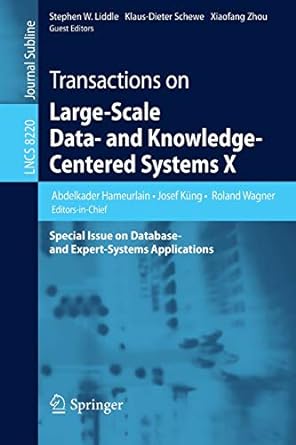Answered step by step
Verified Expert Solution
Question
1 Approved Answer
Apply the dynamic programming and Branch and Bound algorithms to the following instance of the knapsack problem. Consider the Knapsack instance item=5, (W1,W2,W3,W4,W5)=(2,3,1,2,2), (V1,V2,V3,V4,V5)=($10,$50,$30,$40,$70) and
Apply the dynamic programming and Branch and Bound algorithms to the following instance of the knapsack problem. Consider the Knapsack instance item=5, (W1,W2,W3,W4,W5)=(2,3,1,2,2), (V1,V2,V3,V4,V5)=($10,$50,$30,$40,$70) and W=6.
Step by Step Solution
There are 3 Steps involved in it
Step: 1

Get Instant Access to Expert-Tailored Solutions
See step-by-step solutions with expert insights and AI powered tools for academic success
Step: 2

Step: 3

Ace Your Homework with AI
Get the answers you need in no time with our AI-driven, step-by-step assistance
Get Started


